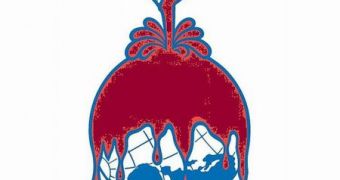Preliminary reports presented at the semiannual meeting of the American Chemical Society showed that even though the BP oil spill's financial and personal tolls for humans were devastating, damage is quite limited for the environment.
Take seafood for example: until now, chemical testing on hasn't yet turned up any samples from fish, shrimp, or oysters with dangerous levels of contamination.
Officials from the National Oceanic and Atmospheric Administration (NOAA), the Food and Drug Administration, along with state health agencies in the gulf region have carried out tests on 1034 fish samples from areas that were closed to fishing because of the oil spill.
They looked mainly for polycyclic aromatic hydrocarbons (PAHs) (a known class of carcinogens), as well as for other contaminants from oil and they detected a few in only a small percentage of the samples.
“It's wonderful news,” says John Finley, a food chemist at Louisiana State University (LSU) in Baton Rouge who reported some of the results as the levels that were detected have been between 100 and 1000-fold lower than the levels of known risk.
Erik Cordes, a marine ecologist at Temple University in Philadelphia, Pennsylvania, tested some deep seafloor ecosystems and said that his first look was encouraging.
Him and his colleagues have studied deep marine communities in the gulf for the last ten years and last month they visited four of their long-term monitoring sites, each of which is within 32 kilometers of the destroyed oil rig.
Cordes said that “visually, we did not detect any impact, So, so far, so good,” adding that this is the first time he sees scientists enthusiast about negative results.
Still he points out that these sites might not be an illustration of the entire region, as most of the oil either rose to the surface or remained at 1000 to 1500 meters deep in underwater plumes, and the sites they visited were at 300 to 500 meter-deep underwater.
Another trip is planned for October to areas expected to be at same depth and in the path of the current underwater plume
ScienceInsider also relates the conclusions of Trevor Penning, a toxicologist at the University of Pennsylvania.
He agrees that the seafood data so far look good but warns that these tests are only a single snapshot, and he says that even if the seafood may be safe now, they will continue monitoring it because it is still uncertain whether the oil remaining in the water or in sediments could eventually contaminate seafood.
Finally, Edward Overton, a marine chemist at LSU, said the oil starts to degrade and become less toxic, as scientists expected it to, after he and his colleagues made gas chromatography-mass spectrometry (GC-MS) analysis on oil samples.
Even though this is rather good news, there are some problems that the oil spill caused, that will take a while to disappear, like the recovery of Louisiana's wetlands, for example.
Also, numbers show that more than 1000 turtles, 70 marine mammals, and 4000 birds have died because of the spill, according to Steve Lehmann, the scientific support coordinator with NOAA's New England district.
Overton said that “right now things seem to be improving a lot faster than I ever dreamed.
“I think all of this is good news, but we can't say with any certainty that we are out of the woods.”

 14 DAY TRIAL //
14 DAY TRIAL //